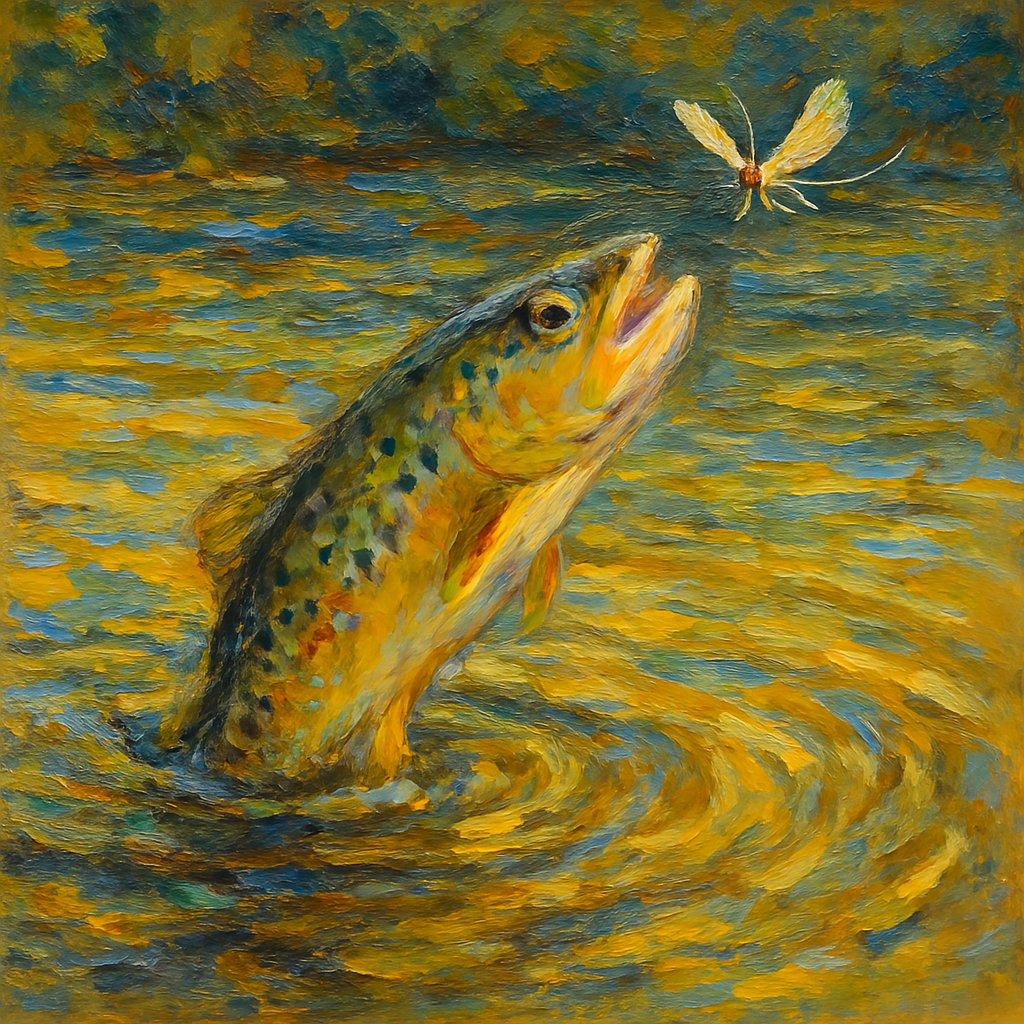There’s a kind of magic that happens in spring that no angler forgets. It’s not just about the cast. Or the water. Or even the trout. It’s about the hatch.
Because when spring trout hatches begin, the whole river wakes up. And if you’re not there for it, you’re missing one of the most honest, wild, soul-stirring dramas on Earth.
Nature’s Green Light
All winter, the trout wait. So do we. And then—without fanfare—it happens.
First the midges. Then the blue-winged olives. Then the big ones. Hendricksons. March browns. Caddis. Sulphurs. They don’t check your calendar. They don’t wait for your day off. But when they rise, the trout rise too.
This is the green light. This is the show.
The hatch is what separates the casual caster from the committed angler. Because anyone can flick a line. But watching a trout nose up through a soft seam to sip a mayfly—that’s where fly fishing becomes something else entirely. A religion. A return.
How to Time It (And Miss Less)
You can read the hatch the way old guides read clouds.
Early spring hatches start when the water edges above 45°F (7°C). The bugs know. So do the birds. Look for the swallows—when they start swooping low over the water, you’ve got a hatch in motion.
But don’t get cocky. Hatches aren’t schedules. They’re signals.
Learn the rhythms of your water. Watch water temps. Watch barometric pressure. Watch shade lines and slow glides. Hatches often peak mid-morning or late evening, but on overcast days? All bets are off. That’s when the river turns soft and wild and full of clues.
The Flies That Matter Most
Forget matching a hundred patterns. You only need a few.
- Blue-Winged Olive – the early riser
- Quill Gordon – the heartbeat of the Southern Appalachians
- Hendrickson – a heavy-lifter in early spring
- Elk Hair Caddis – for the bubbly edges
- Parachute Adams – your emergency backup plan
Carry different stages: duns, emergers, spinners. Trout don’t always want the bug that’s floating—they often want the one that’s halfway there, trapped in the surface film, vulnerable. Just like we are when we start something.
Tuning into the Water
Most people think fly fishing is about catching fish. But the real ones? The ones who keep coming back—they know it’s about listening.
Every rise tells a story.
The soft sip in the foam line? That’s a trout taking emergers.
The splashy slash on the far bank? Caddis chaos.
The slow head-and-tail rise under the shadow of a tree? He’s selective. Smart. Waiting.
You learn to watch like a hawk and move like a heron. Not because someone told you to—but because the river deserves it.
Why Spring Hatches Heal
There’s a reason spring fishing feels like therapy.
After the silence of winter, after the frostbite and waiting, spring hatches remind us that life still surges underneath it all. That timing matters. That beauty rises.
And maybe most importantly—it gives us a chance to start again. You tie on a size 14 dry. You cast. You drift. You miss. You mend. You drift again. This is the rhythm of trout fishing. This is the rhythm of life.
If you want to go deeper into identifying hatches by region and month, Troutnut’s hatch chart is a goldmine. Opens in a new tab, just like the door to your next trip.
